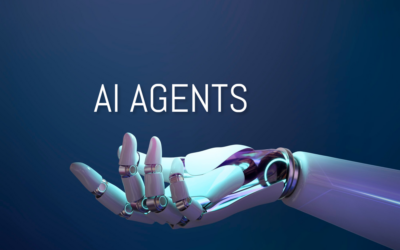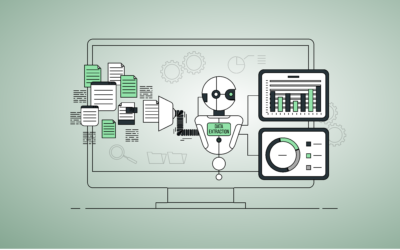Table Of Content
Enterprises navigating the journey of adopting Generative AI (GenAI) are discovering significant opportunities to enhance existing business process workflows. Leveraging proprietary data improves operations and customer interactions, building a lasting competitive edge. Integrating AI into unique business processes creates differentiation. HR support and recruitment have emerged as primary use cases for GenAI, with businesses and HR vendors incorporating AI-driven features to enhance core functionalities.
At Krasamo, an AI development company based in Dallas, Texas, we assist clients in evaluating whether to develop in-house solutions or leverage third-party applications and service providers. We help evaluate the organization’s existing infrastructure and readiness, as well as the available expertise and AI skills. We ensure your AI initiatives are supported by the right talent, whether through direct collaboration, contractors, or staff augmentation.
This paper is part of our GenAI Use Case Series, illustrating how GenAI can transform recruitment and support an organization’s AI strategy.
Generative AI in HR
Hiring the right people is not just a process but a strategic investment that can significantly impact a company’s success!
Integrating GenAI solutions into the organization’s existing workflows or HR software tools is the next step in mastering operational efficiency. Laszlo Bock, author of Work Rules!, emphasized the importance of hiring the right candidate. He believed that a bad hire could cost a company significantly more than a bad product. He advocated using data and analytics to make more informed hiring decisions.
Many organizations are investing in enhancing their HR processes and efficiencies, augmenting humans in the process, or what’s called “human in the loop” (HITL), to ensure accurate and ethical decisions. Your LLM should be customized to align with your enterprise’s unique HR processes and environment to optimize your recruitment process, onboarding experiences, and skills assessment.
GenAI in HR operations helps organizations streamline talent management and improve efficiency in workforce-related tasks. Using GenAI, companies can more efficiently match candidates’ skills with job requirements, ensuring that only the most qualified candidates are considered for interviews.
As the recruitment process iterates over time and results are reviewed, the output quality is validated, leading to greater trust. Eventually, the process becomes automated and operates at scale without human intervention. This adoption of GenAI in HR operations helps organizations streamline talent management and improve efficiency in workforce-related tasks.
HR Recruitment–Talent Acquisition
The HR recruitment system must be thorough and fair while maintaining transparency in the evaluation process. You can start with a basic prompt engineering system, then refine the approach by adding RAG for company context and optionally add fine-tuning for specialization.
To illustrate how GenAi would work in HR recruitment, we will describe a high-level implementation roadmap for building a proof of concept (POC).
1. Phase 1 – Foundation Setup
- First steps:
- Collect and organize existing job descriptions
- Define evaluation criteria
- Set up a basic prompt engineering system
- Establish the initial validation process
- Key deliverables:
- Working basic system
- Standard evaluation criteria
- Initial prompt templates
- Basic validation metrics
2. Phase 2 – RAG Implementation
- First steps:
- Create vector database
- Index company documents
- Past job descriptions
- Company policies
- Department requirements
- Set up a retrieval system
- Integrate with existing prompt system
- Key improvements:
- Company-specific context
- More accurate evaluations
- Better alignment with policies
3. Phase 3 – Fine-tuning (Optional)
- Consider only after success with RAG:
- Collect historical hiring data (including labeled successful/unsuccessful cases)
- Train the model on this data to specialize it for the company’s recruitment needs
- Validate the fine-tuned model against the existing system to ensure improved accuracy
- Ongoing training as more data becomes available
4. Continuous Processes
- Throughout all phases:
- Monitor system performance
- Update prompts as needed
- Maintain data quality
- Ensure human oversight
- Collect feedback for improvements
Essential First Steps:
- Start with basic prompt engineering
- Ensure proper error handling
- Implement a human review process
- Setup monitoring and feedback loops
- Document all processes and decisions
This phased approach allows you to:
- Build a foundation before adding complexity
- Validate each step before moving forward
- Maintain control over the process
- Ensure ethical considerations at each stage
How the System Processes Applications
The HR recruitment system should be built on core principles of thoroughness, fairness, and transparency in candidate evaluation. At its heart, the system leverages Large Language Models (LLMs) to transform the traditional resume screening process into an efficient, structured workflow.
Let’s explore how the system processes applications:
When a resume arrives, it undergoes a processing phase. The LLM, guided by carefully crafted prompts, converts unstructured resume text into organized, analyzable data. This isn’t just simple text extraction—the system intelligently identifies and categorizes key information such as professional skills (including years of experience), educational credentials, work history, and significant project achievements. We maintain standardized output formats through meticulously designed prompts to ensure consistency and reliability.
The job requirement analysis component works in parallel, processing job descriptions to create a structured framework of required qualifications, skills, and experience levels. We employ specific technical settings (like low temperature in the LLM) to ensure consistent and reliable parsing of these requirements. This standardization is crucial for fair candidate evaluation. The candidate evaluation phase combines these elements, systematically comparing resume data against job requirements. The system generates objective scoring based on skill matches and provides detailed, structured feedback about candidates’ fit for the role. This isn’t just about producing a simple “yes/no” decision—it’s about creating comprehensive, actionable insights for hiring managers.
From a technical architecture perspective, we’ve incorporated several crucial features that ensure robust production deployment. These include comprehensive error-handling mechanisms, strongly typed interfaces for reliable data processing, a modular design that allows easy system extensions, and consistent JSON formatting, enabling smooth integration with existing HR systems. However, implementing such a system requires careful consideration of ethical and technical aspects. On the ethical front, building safeguards, including bias mitigation in prompts, transparent evaluation criteria, mandatory human oversight for final decisions, and regular audits of system outputs to ensure fairness.
From a technical standpoint, continuously monitor LLM response quality, implement retry mechanisms for API calls, and utilize caching strategies to optimize performance and reliability. This system design represents an initial approach using prompt engineering, a foundation for future enhancements. As your needs evolve, explore more advanced implementations, including RAG (Retrieval Augmented Generation), to incorporate company-specific knowledge and potentially fine-tuned models for specialized processing.
Generative AI HR Use Cases
Generative AI transforms human resources by streamlining and automating core functions, making processes more efficient and personalized.
Recruitment and Hiring
- Resume Screening: Automating the process of reviewing resumes and matching candidates’ skills to job requirements.
- Job Description Creation: Generative AI tools like ChatGPT can quickly generate tailored job descriptions based on specific role requirements, saving time and ensuring consistency across job postings.
- Cold Outreach Emails: AI can automate the drafting of personalized cold outreach emails to potential candidates, improving communication efficiency while maintaining a human touch.
- Interview Script Generation: The LLM can create interview questions and scripts aligned with the job description, ensuring consistency and relevance throughout the interview process.
Onboarding
- Simplifying and accelerating the onboarding process by automating administrative tasks and personalizing the experience for each employee.
Employee Self-Service
- Leveraging AI-powered tools to allow employees to access HR information, request support, and handle HR-related tasks with minimal human intervention.
Skills Assessments
- Automating assessing employees’ skills, identifying gaps, and recommending personalized training or development programs.
This adoption of GenAI in HR operations helps organizations streamline talent management and improve efficiency in workforce-related tasks. Contact our AI development services team to learn more about specific examples of successful implementations, cost considerations, and resource requirements.












